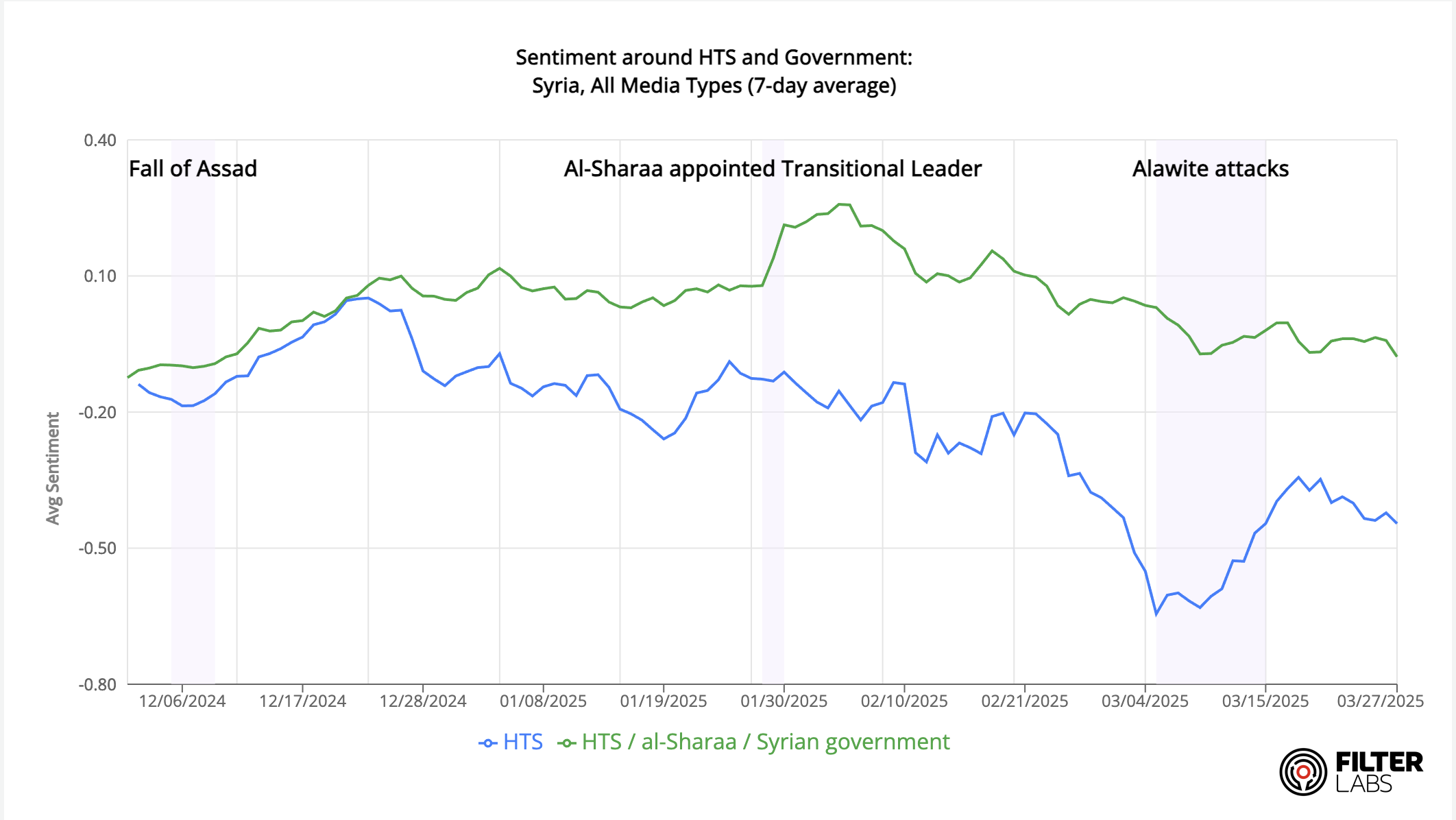Is Syria’s New Government Living Up to Its Promise?
After toppling Bashar al-Assad and being named transitional president of Syria, Ahmed al-Shaara has been widely congratulated and received by foreign leaders. However, FilterLabs found a disparity between the international community’s initial optimism about Syria’s future and sentiment within Syria itself.
Using Talisman, our data platform, to look at both news coverage and social media discourse from Syria, we found indications that Syrians have some real reservations about their new government. After a brief honeymoon, Syrian sentiment towards HTS and the government is declining. Concerns are three-fold:
1. Factional violence. Many Syrians are hoping that sectarian violence is a thing of the past after more than a decade of brutal civil war. But recent attacks against Alawite Syrians (Bashar al-Assad’s ethnoreligious base) left some commentators wondering if al-Shaara and his government could deliver. FilterLabs found multiple articles and social media posts that blamed al-Shaara for not preventing the attacks. As one news analysis put it:With Ahmad al-Sharaa assuming the presidency of the transitional phase in Syria in January 2025, some question the ability of the transitional regime to protect minorities and achieve justice in a country that has been experiencing ongoing chaos for more than a decade.
2. Government legitimacy. The factional violence also raises a more abstract but still pressing issue. Al-Shaara has suggested that the current HTS-led government is in a “transitional phase.” But a transition to what? How will the next government establish its legitimacy—through force, or by including and balancing the interests of Syria’s many religious and ethnic groups? One professor of international relations had many more questions than answers:
What are the foundations for forming the "interim" legislative council and its powers? What are its political criteria, first and foremost? Is it limited to representatives of armed opposition factions? Or does it include figures from previous Syrian opposition political formations? What are its criteria for representing the components of Syrian society? Does it include Muslims, Christians, and Druze? Are Sunnis, Alawites, Ismailis, Shiites, Orthodox, and Catholics represented? What about national representation between Arabs and Kurds, especially given the SDF's refusal to join the military administration?
3. Public safety. There are reports of looting and other forms of lawlessness. After the attacks on the Alawites, the Patriarch of the Antiochian Orthodox Church posted his concerns on Facebook. In a message addressed to al-Shaara, the Patriarch described robbery, car theft, arson, attacks on religious buildings, and violence against civilians. “Therefore: we appeal to you [al-Shaara],” he wrote, “with your wisdom and efforts, put an immediate end to these massacres.”
For many Syrians, the fall of the Assad regime was as unexpected as it was welcome. Al-Shaara and HTS now face many of the classic problems of political science and philosophy—like establishing the legitimacy of the state and the rule of law—in a country that has had little taste of either in recent memory.
%20-%20Tradmark.png)
